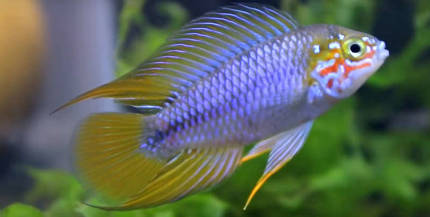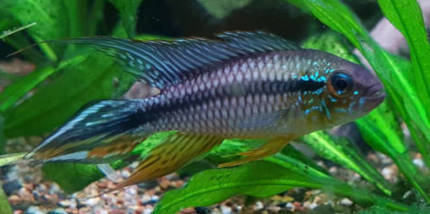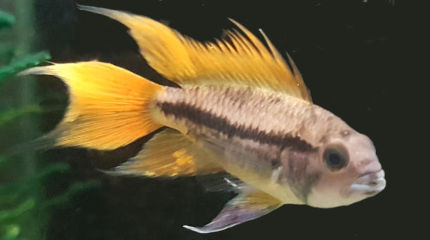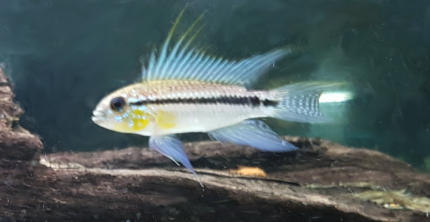Apistogramma Borellii (also known as the Umbrella Dwarf Cichlid) are one of the smaller Apistogramma species. Borellii also tolerate cooler water temperatures compared to other Apistogramma species. These unique characteristics make Apistogramma Borellii an appealing fish to keep in our aquariums.
About Apistogramma Borellii
Apistogramma Borellii Profile
Origin: Southern Brazil, Paraguay and northern Argentina.
Size: Female up to 2 inches (5 cm). Male up to 2.5 inches (6.5 cm)
Minimum tank size: 15 or 20 gallons (55 or 75 litres) depending on setup and tank mates.
Tank region: Bottom region to bottom half of the tank.
Water temperature: 68 - 79 °F (20 - 26 °C)
Water conditions: PH between 5 to 7.5 is desirable. Soft water with a low TDS is preferred. Commercial bred varieties are less fussy.
Difficulty to keep: Intermediate
Borellii are found further south compared to other Apistogramma species. They originate from southern Brazil, Paraguay and northern Argentina in tributaries of the Paraguay River and lower Parana River basin. As such Borellii prefer water temperatures on the slightly cooler side compared to most other Apistogrammas.
As with a lot of Apistos Borellii live in slow moving tributaries which are often partly shaded and usually have a sandy bottom.
Apistogramma Borellii are one of the smaller commonly available Apistogrammas in the aquarium hobby.
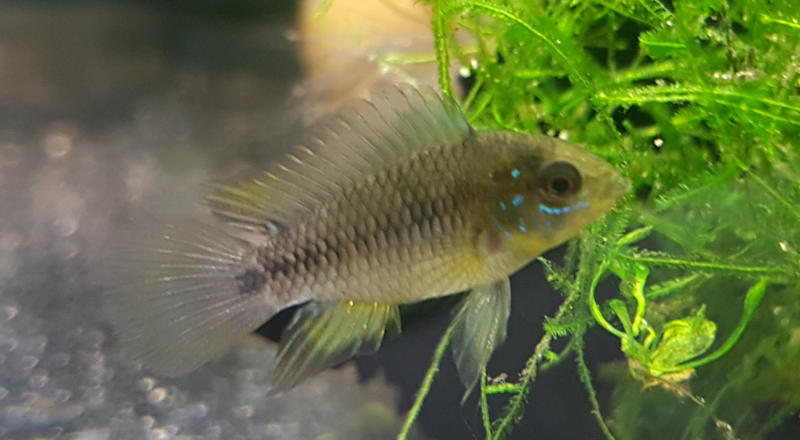
Behaviour and Personality
Borellii are known to be one of the quieter and least aggressive Apistogramma species. They are smart inquisitive fish and are generally very peaceful, only becoming territorial and aggressive when breeding.
As with all Apistogrammas Males may show some aggression towards each other, this can be minimised by arranging the tank is a suitable way - see Aquarium Layout.
If keeping multiple males it is important that each has its own territory, hence a larger aquarium would be required.
Alternatively in a community tank you could keep a sole male as a centre piece fish or a male with 2 or 3 females.
Apistogramma Borellii Male vs Female
Males
Male Apistogramma Borellii are larger and more colourful than their female counterparts.
The males have elongated fins, particularly the dorsal, pelvic and anal fins. The dorsal and anal fins often so long that they flow back as far as the tail (caudal fin).
Females
As with other apistogrammas female Borellii are smaller and less colourful. They become bright yellow when breeding.
What to feed Apistogramma Borellii
Apistogramma Borellii are omnivorous fish, they thrive on a mix of foods. High-quality pellets or flakes designed for tropical fish can serve as a staple diet, providing essential nutrients. However it is highly recommended to supplement their diet with live or frozen foods such as brine shrimp.
For more information on what to feed you Apistogrammas see our article Best Foods For Apistogrammas.
Apistogramma Borellii Colour Variants
Apistogramma Borellii Blue
Used to describe the more typical Borellii, it is predominantly blue with some yellow on the fins.
Apistogramma Borellii Opal
The distinguishing feature of the Opal colour strain are red speckles on the face which appear on the cheek region extending back as far as the gill covers.
The body colours remain that of the typical male, predominantly blue with some yellow on the fins.
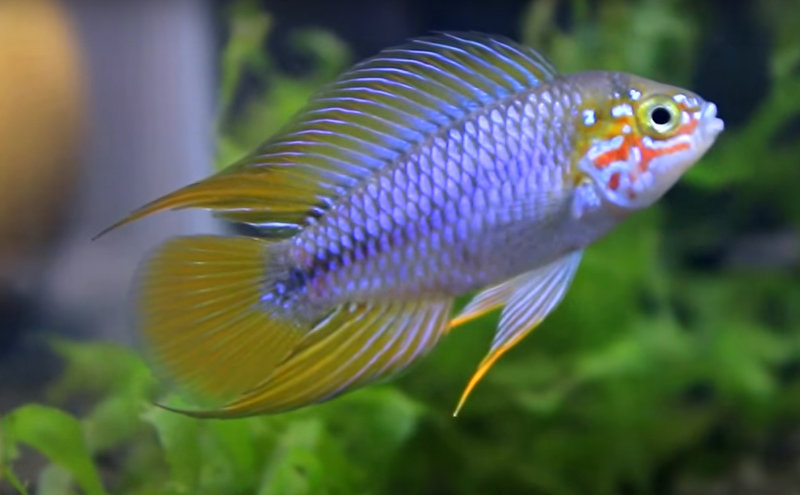
Apistogramma Borellii Yellow Head
As the name suggests the male more dominant yellow colour on the front half of the body including a yellow head. The back half of the body is blue.
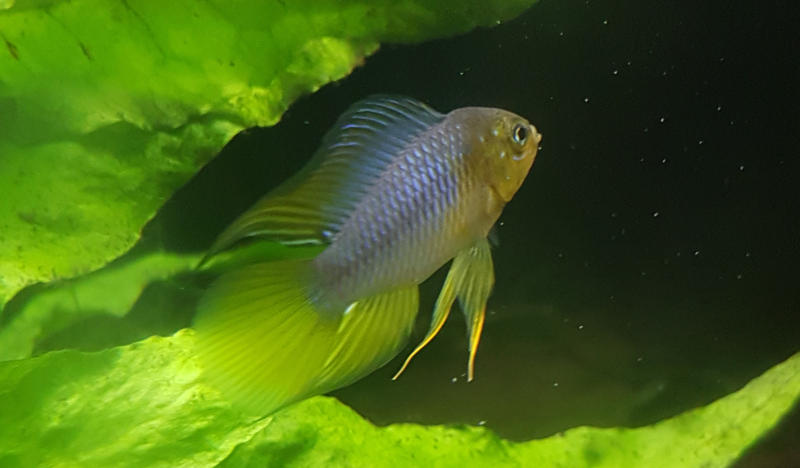
Apistogramma Borellii Aquarium Setup
Tank Size
As Borellii are one of the smaller species of Apistogramma you could keep a single male with some tetras is a 10 gallon (38 litres) tank, however a larger tank is preferable.
To keep a trio (1 male + 2 females) I suggest at least a 20 Gallon (76 litre) tank, this gives them more spaces and minimises any possible aggression.
Substrate
As with all Apistogrammas a sand substrate is recommended. Apistogrammas enjoy sifting the sand from time to time as they look for food.
A sand substrate also mimics the natural environment where Apistogrammas are found in the wild.
Aquarium Layout
Borellii (like all apistos) appreciate some hiding places and within the aquarium and objects which break up line of sight. This can be achieved by adding driftwood, rocks and plants to the aquarium.
These separated areas of the tank also provide separate territories should males get aggressive such as during breeding.
If you are after more information on breeding Apistogramma check out How To Breed Apistogramma Agassizii guide.
Best Apistogramma Borellii Tank Mates
Other non aggressive fish are best, tetras (there are so many to choose from), and dwarf pencil fish are generally good choices.
For more detail on selecting appropriate Apistogramma tank mates check out or detailed article, Apistogramma Tank Mates.
Conclusion
Apistogramma Borellii are a fascinating Apistogramma. I hope this article has highlighted the characteristics which make them unique, so that they can be better understood and cared for.
You may also find our article Apistogramma Dwarf Cichlid - The Ultimate Care Guide useful for further information about keeping Apistogrammas.
